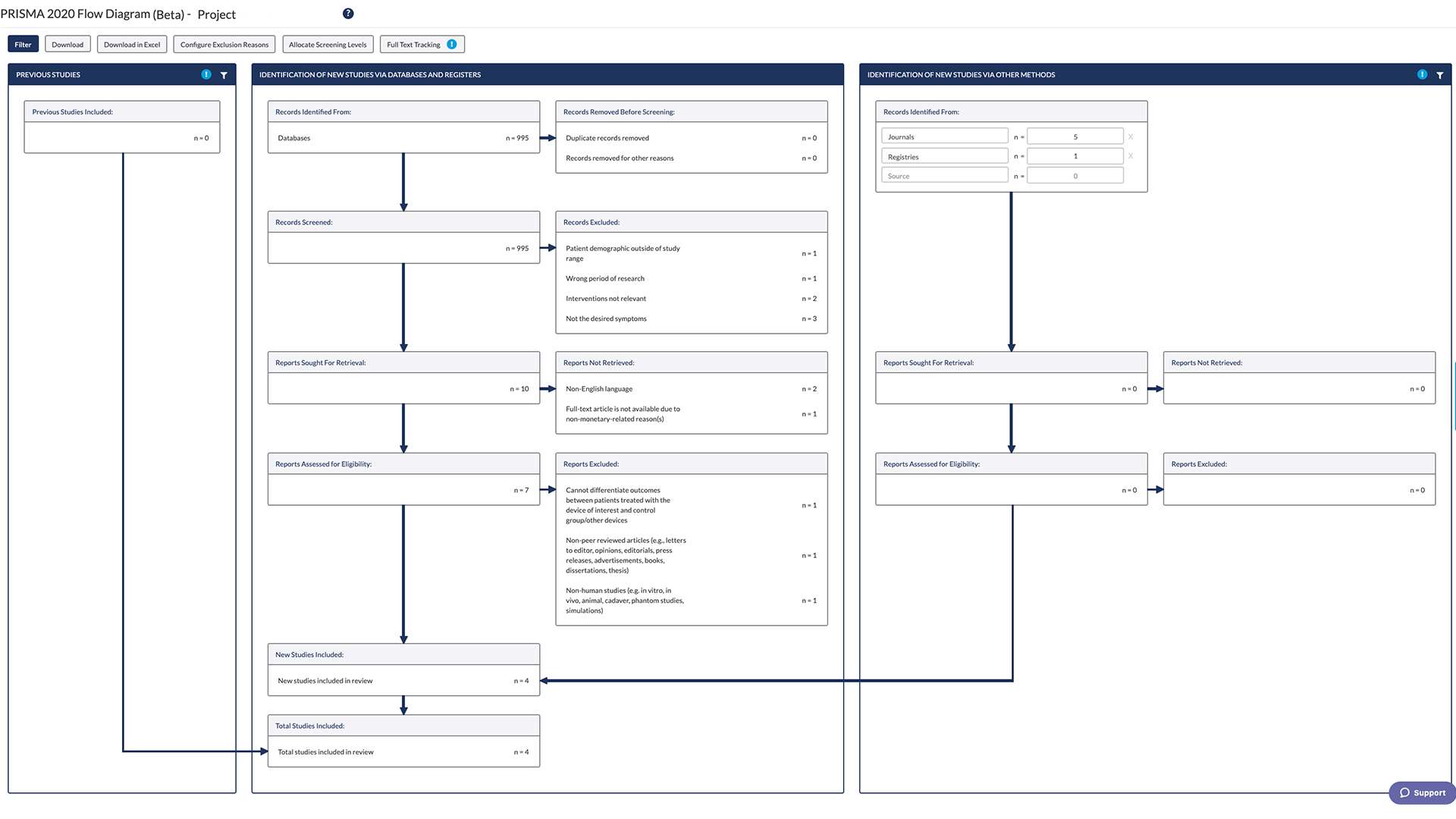Living Review Flow Chart for Systematic Reviews


Automate every stage of your literature review to produce evidence-based research faster and more accurately.
The PRISMA statement is a guideline designed for transparent reporting of the rationale, processes, and findings of systematic reviews. It was first published in 2009, but due to significant changes in technology and methodologies over the past decade, was updated in 2020. The new version comes with a refreshed 27-item checklist and an updated flow diagram, which now includes conditions for living systematic reviews.
What Is a Living Systematic Review?
A living systematic review is a systematic review that is continually updated with relevant new evidence as it becomes available. It is marked by continual active monitoring of new evidence (in the form of monthly searches), which is promptly incorporated into the review and supported by up-to-date communication about the review’s status.
Living systematic reviews are done for high-priority topics, especially for those that may be greatly impacted by emerging evidence or need comprehensive and always up-to-date reviews. They’re also great for reducing workload; you can use experience from previous versions and avoid “research waste.”
Traditional Systematic Review Versus Living Systematic Review
The methods for creating a traditional and a living systematic review are very similar. The main difference is with respect to the frequency of seeking, screening, and incorporating new evidence into the review. A traditional review only includes evidence within the initial study timeline, while a living review considers evidence as it becomes available, which is what makes the study “living.” That said, living systematic reviews may not “live” forever, and may be stopped once the researchers conclude that the study doesn’t need to be updated anymore.
Living systematic reviews also require the author team to be coordinated and exert continuous effort to keep the research up to date, making any adjustments when needed, and possibly even changing the topic as the study evolves. Additionally, due to its dynamic nature, living systematic reviews are often only available online.
How PRISMA 2020 Affects Living Systematic Reviews
The PRISMA 2020 template for systematic and living reviews includes revisions that change how both systematic reviews are reported.
The PRISMA Checklist
There are several noteworthy changes to the PRISMA checklist with the 2020 refresh. Among them are new items, such as certainty assessment; certainty of evidence; competing interests; and availability of data, code, and other materials; as well as sub-items under study selection and synthesis of results.
Of course, it is best to check a PRISMA 2020 checklist example to see all the revisions.
The PRISMA Flow Diagram
While the 2009 PRISMA flow diagram has been widely used to repor systematic reviews, it was not designed for capturing the results of living systematic reviews. The 2020 version changes this. Not only can you choose between two templates (one that includes databases and clinical trial or preprint registers, and another with extra sections for elaborating on gray literature); you now also have diagrams designed specifically for living reviews (for both aforementioned templates).
Learn More About DistillerSR
(Article continues below)
Learn More from DistillerSR
PRISMA is a necessary guideline for all systematic review researchers. One must be familiar with it and should follow its rules and use its tools to publish transparent, organized, and comprehensive reviews. Abiding by the PRISMA statement is easier when you use a systematic review software like DistillerSR, as this automates some of the steps, leaving you to take care of more significant tasks.









